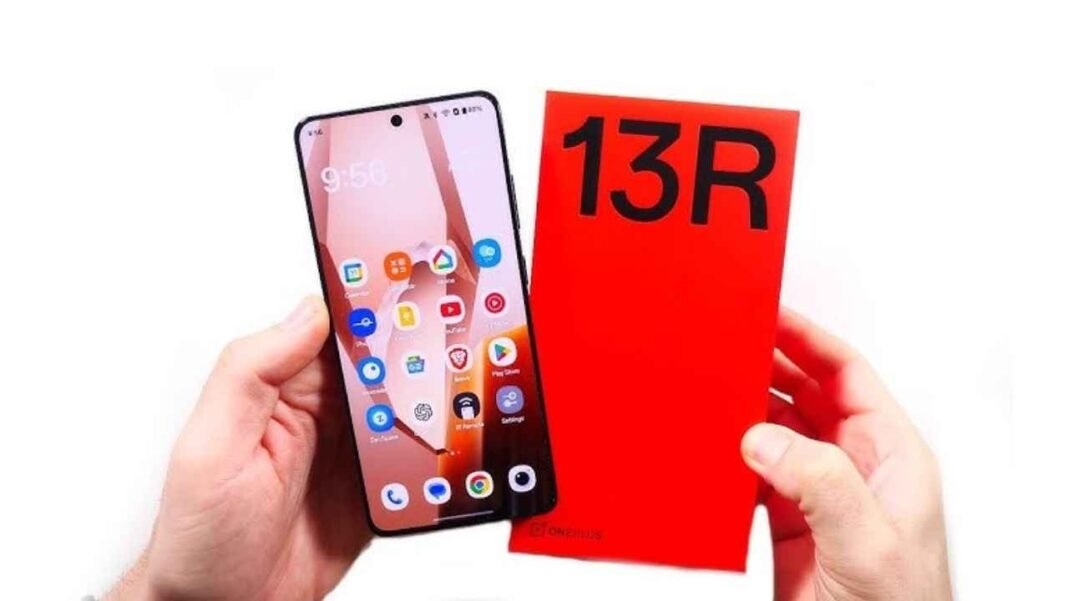In the highly competitive smartphone market of 2025, OnePlus keeps coming up with great options. The OnePlus 13R is a device that bridges the gap between high-end features and low prices. The 13R, which was announced in January 2025 as the cheaper version of the premium OnePlus 13, takes a lot of its older sibling’s DNA and makes it its own as a value-driven performer. Starting at $599 for the base model with 12GB of RAM and 256GB of storage, this phone is aimed at people who want high-end specs without the high price. It goes up against the Google Pixel 8a and the Samsung Galaxy S24 FE. The OnePlus 13R came out just a few months ago and has already gotten a lot of praise for its good balance of performance, battery life, and display quality. It’s a great choice for gamers, media lovers, and everyday power users.
The OnePlus 13R looks a lot like the flat-edged, minimalist style that has become popular with recent iPhones and other high-end Android phones. It has an aluminum frame that is only 8mm thick and weighs 206g. The phone comes in sleek colors like Nebula Noir and Astral Trail. It has a flat 6.78-inch ProXDR AMOLED display that is protected by Corning Gorilla Glass 7i for extra strength. This 1.5K panel (2780×1264 resolution) has a 120Hz LTPO refresh rate that makes scrolling smooth as butter. It also has a peak brightness of up to 4500 nits, which makes it easy to see in bright sunlight, and HDR10+ support for watching media in bright colors. Reviewers have praised its Aqua Touch 2.0 technology, which lets it work even when your hands are wet or it’s raining, and Glove Mode for winter use—features that make everyday use better. However, some users say that the flat edges can feel sharp after holding them for a long time, which is a small ergonomic flaw in an otherwise high-quality build that is rated for IP65 dust and water resistance.
The Qualcomm Snapdragon 8 Gen 3 chipset powers the OnePlus 13R. It’s a step behind the newer Snapdragon 8 Elite in the OnePlus 13, but it’s still a beast for mid-range tasks. With up to 16GB of LPDDR5X RAM and 512GB of UFS 4.0 storage (but no microSD expansion), it can easily handle multitasking, gaming, and AI-driven tasks. It gets great benchmark scores, like over 2 million on AnTuTu. OnePlus has made it even better by adding a custom CPU scheduler for gaming and a bigger Dual Cryo-Velocity vapor chamber cooling system (9925mm²) that keeps temperatures in check during long sessions of games like BGMI or Call of Duty Mobile. The software runs on OxygenOS 15, which is based on Android 15. It promises four years of OS updates and six years of security patches. This is good, but it falls short of the seven-year promises made by Google and Samsung. AI Detail Boost for photos and reflection removal are two examples of AI features that work well without making the clean, customizable interface too busy.
The OnePlus 13R’s camera is a big step up from the OnePlus 12R’s. It replaces the niche macro lens with a more versatile triple-camera setup: a 50MP Sony IMX906 main sensor with OIS for clear shots in bright light, a 50MP ultrawide for wide landscapes, and an 8MP telephoto for 2x optical zoom—great for portraits and things that are far away. The 16MP front camera takes good selfies, but it doesn’t do as well in low light as dedicated camera phones like the Pixel 8a. Reviewers like its bright colors that are ready for social media and its pro modes for manual adjustments, but they say that night shots sometimes look too processed. The highest resolution for video recording is 4K/60fps with stabilization, which makes it good for casual vlogging.
The OnePlus 13R’s battery life is where it really shines. Its huge 6000mAh silicon-carbon cell, which is 500mAh bigger than the 12R’s, can last up to two days of mixed use, like gaming and streaming. With 80W SUPERVOOC wired charging, it can be fully charged in about 30 minutes. A charger is included in the box, which is not common these days. There are a lot of ways to connect, like 5G (including next-gen 5.5G support in some areas), Wi-Fi 7, Bluetooth 5.4, and NFC. The stereo speakers are tuned with Dolby Atmos for immersive sound. The ultrasonic fingerprint sensor works quickly, even when your fingers are wet, and the call quality is clear.
The OnePlus 13R has some good points, but it also has some bad ones. At this price, not having wireless charging seems like a huge mistake, especially since budget competitors have it. The camera array is better, but it still doesn’t compare to the best computational photography cameras. Even though the software support is longer, it still doesn’t last as long as the competition’s. Some people may not like the flat design as much as the older models’ curved elegance. Some users said they saw minor throttling under heavy loads during hands-on tests, but overall efficiency is still a strong point.
In short, the OnePlus 13R lives up to OnePlus’s reputation as a flagship killer. For $599, it has Snapdragon power, a long-lasting battery, and a great screen. It’s not the best camera or the longest-lasting device, but for people who want the best performance for their money and want a device that can do a lot of things, it’s an obvious upgrade from the 12R or a smart choice over more expensive flagships. The 13R is proof that you don’t have to spend a lot of money to get a phone that feels like a steal.


